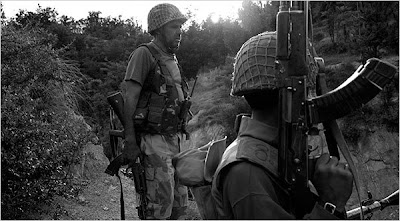Here's a delightful "human interest" audio slideshow featured on CityFM89 (a FM station in Pakistan, which promotes the rich musical heritage of the region while offering a wide variety from pop to world music, from jazz to house music) about Abdul Waheed, the owner of Waheed Music Shop in Karachi.
Waheed Music Shop is tiny store full of musical instruments; acoustic guitars, tablas, flutes and banjos are crammed on the floor, waiting to be sold or repaired. The piece tells us that Abdul Waheed has been doing this work for over 40 years, and has had renowned artists visit his shop for all their musical needs. I'm certain that the Pakistani qawwali musicians have found their way to his shop.
It can also be viewed on Vimeo.
While I can't speak Urdu as such, it gave me pleasure to hear a few words in Abdul Waheed's narration that I could understand...ustaz, muhtaram, janab...all Urdu words with strong Arabic roots, and virtually similar in pronunciation. It also reminded me of living in Karachi many years ago, when things weren't as complicated as they seem to be now.
Although I liked this audio slideshow very much, I thought the panning was excessive but some people seem to like it. To me, it's just superfluous and distracting.
My thanks to Sitwat Rizvi who sent me the link.
 2:00 AM
2:00 AM



























